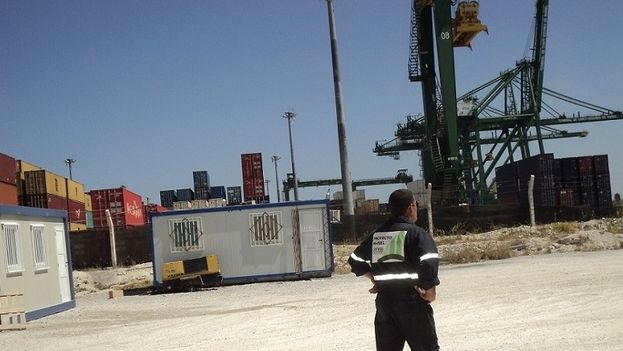
![]() 14ymedio, Yoani Sanchez, Havana, 25 June 2016 — “We want to be on the front pages of newspapers” claimed a taxi driver in the middle of heavy traffic on a Panamanian street after being asked about the leaked documents from the firm Mossacl Fonseca. A few weeks after that conversation, the media focused again on that country this Sunday, but this time for the opening of the new Panama Canal locks.
14ymedio, Yoani Sanchez, Havana, 25 June 2016 — “We want to be on the front pages of newspapers” claimed a taxi driver in the middle of heavy traffic on a Panamanian street after being asked about the leaked documents from the firm Mossacl Fonseca. A few weeks after that conversation, the media focused again on that country this Sunday, but this time for the opening of the new Panama Canal locks.
Between the cacophony of the official celebrations and the criticisms provoked by the megaproject, one thing is missing from the news reports: the supposed beneficiary of such improvements – Cuba’s Port of Mariel. A cloak of silence surrounds the details of its current conditions, or lack of conditions, to serve as a stopover for ships that will pass through the new facilities and can carry up to 13,000 20-foot-equivalent-unit (TEUs) containers each.
When the Cosco shipping company’s vessel Andronikos, from China, with a capacity of 9,400 containers passes from the Atlantic to the Pacific through the new facilities today, it will awaken the competition between the region’s ports to win the largest numbers of vessels using the canal.
In April of 2015, one of those responsible for the development of the Cuban port facility some 28 miles from Havana, said that the government aspired to convert the container terminal at the Port of Mariel into a “better choice” for transshipments in the region, once the Panama canal expansion opened.
A projection also confirmed recently by Alicia Barcena, Executive Secretary of the United Nations Economic Commission for Latin America and the Caribbean (ECLAC), said that the port will be “a major logistics hub and regional transfer” and stressed “the huge advances in the Mariel Special Development Zone (ZDEM) and its port terminal.”
However, the flagship project of Raul Castro’s government, intended to boost the national economy, generate exports and attract investment, is not ready at the precise moment when it might tap the huge flow of cargo through the improved Panama locks. Several sources consulted suggest that the the main cause for the delay is the poor dredging of Mariel Bay.
With 4,268 workers, including 454 technicians and 221 engineers, the Port of Mariel has not taken advantage of the nine-year duration of the work on the Panama Canal, including the fact that that project is more than 24 months late in relation to its initial schedule. A reality that belies Cuba’s official forecasts that placed the beginning of 2016 as the date for the opening of its terminal for Post-Panamax containers.
However, Miami-Dade County has done its work. Last year that port city served the highest number of containers in ten years, and has been preparing to welcome the large freighters that transit through the new locks. Officials there hope that port will become the first stop in the southeastern region of the United States, before the boats file through Panama.
The works in Miami have been mentioned over the past few days by the international media, linking them closely to the Panama Canal. Improvements in the port facilities include new railroad service, plus a tunnel connecting the port with the interstate highway system. While in Cuba, tons of rice and fertilizer have remain stuck in the Bay of Havana in recent weeks, in the absence of freight cars to transport them.
Significantly, the issue of the Port of Mariel has a diminished presence in the official Cuban media and the few reports that are transmitted avoid specifying the current volumes of activity. No ZDEM specialist or authority has explained to the national press how the country will take advantage of the opportunities opening from today, while Panamanians celebrate the inauguration of the work of the century.
Instead of information, we get only silence and rumors. The dark wall of secrecy installed around the Port of Mariel separates the official megaprojects from reality.
